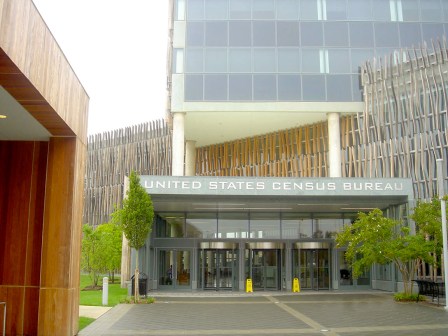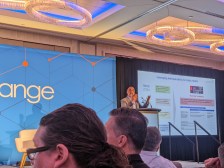Pentagon CIO: Services all in agreement on Windows 10 goal

All four military services and agencies across the Defense Department are in agreement with a tight timetable to move to Microsoft Windows 10, Pentagon CIO Terry Halvorsen told reporters Friday.
There had been reports that individual military branches doubted the feasibility of making the transition by Jan. 31, 2017, as ordered by Deputy Secretary Bob Work in February.
But Halvorsen said that’s not the case.
“[Army CIO Robert] Ferrell and I are in 100 percent agreement, as are the leadership of the Army and the [DOD] secretary, that our role remains to get Windows 10 in a year,” Halvorsen said. “Are there challenges with that goal? Absolutely. Will we make that goal? I think we’re going to come awfully close to making that goal.”
[Read more: Marine Corps pilots faster Windows 10 transition]
Halvorsen said some organizational units or programs might be eligible for a waiver excluding them from the deadline, but declined to say exactly how many. Some research and development programs, and weapons systems likely won’t make it by the end of January, but would do so soon after, he said.
All DOD’s major networks, such as the Navy’s Next Generation Enterprise Network and the Marine Corps Enterprise Network, will make it to Windows 10 by January, Halvorsen said, adding that they will account for more than 80 percent of the department’s upgrades to the operating system “when you look at what people are doing day-to-day on the major networks.”
For those that don’t qualify for a waiver and still fail to meet the deadline, there will be repercussions, Halvorsen said. Without being specific, he added “the first repercussion would be around how people were spending their money.”
Halvorsen said his bullishness to move to Windows 10 has two sources — the “baked-in security” and the shared communications from Microsoft’s Azure cloud platform.
DOD has never before had “an operating system that had this much security baked in from the beginning,” he said. “If you’re using a computer at home and you’re not on Windows 10, you’re doing yourself an injustice — you ought to be moving to Windows 10.”
Halvorsen plans to issue similar guidance to DOD employees for using Windows 10 at home on their personal workstations, stopping just short of officially endorsing the operating system.
“We’re going to put out some guidance to our employees in general — it’s not an endorsement of Windows 10 or Microsoft specifically — listing what the characteristics of Windows 10 would give you if you put it in your home system,” he said. “That’s as close to an endorsement as I can get for a software product.”
He called system “game-changing…in the long run” because of its cloud-friendliness with Azure, allowing services and agencies to stand up secure, integrated communications and “independent clouds.”
“You could have a cloud that’s Army, have a cloud that’s Navy, you could have an Army-Navy cloud, an Air Force cloud,” Halvorsen said.
DOD’s even pressing foreign allied partners to develop a Windows 10 baseline, he added. “We have an opportunity…to improve the way we can all communicate because we’ll all be on a standard baseline.”
During the press call, Halvorsen covered a variety of topics, including the recent criticisms of the DOD’s failure to meet the goals of the Federal Data Center Consolidation Initiative by the close of fiscal year 2015. The DOD inspector general reported in March that DOD fell short by more than half of the 40 percent consolidation goal set by the Office of Management and Budget, due mainly to a revised definition of what the term data center includes.
[Read more: DOD missing data center closure goals — audit]
Despite an increase in the number of defined DOD data centers, Halvorsen said he’s going to focus foremost on the money and savings.
“This less about about counting numbers of data centers, numbers of servers — frankly I’m not going to do that,” he said. “I’m counting the money we’re spending on that, and we’ve got to reduce that and use that money for higher priorities.”
He added, “Cost is one of the things that, while we measure it, it’s also the incentive. If we can close data centers or make them more efficient, that money goes right back into the service accounts for all kinds of things.”
As for the “special nodes” that accounted for many of the added data centers, Halvorsen all but said it’s not worth the department’s time to focus on them now.
“Those nodes aren’t where the money is, and in most cases there’s no value in consolidating them,” he said. “What I’m going to work on is where’s the money spent in data centers, and it’s not in expanding the definition of data centers. It’s cleaning up the original definition, which included the very big, costly data centers.”






